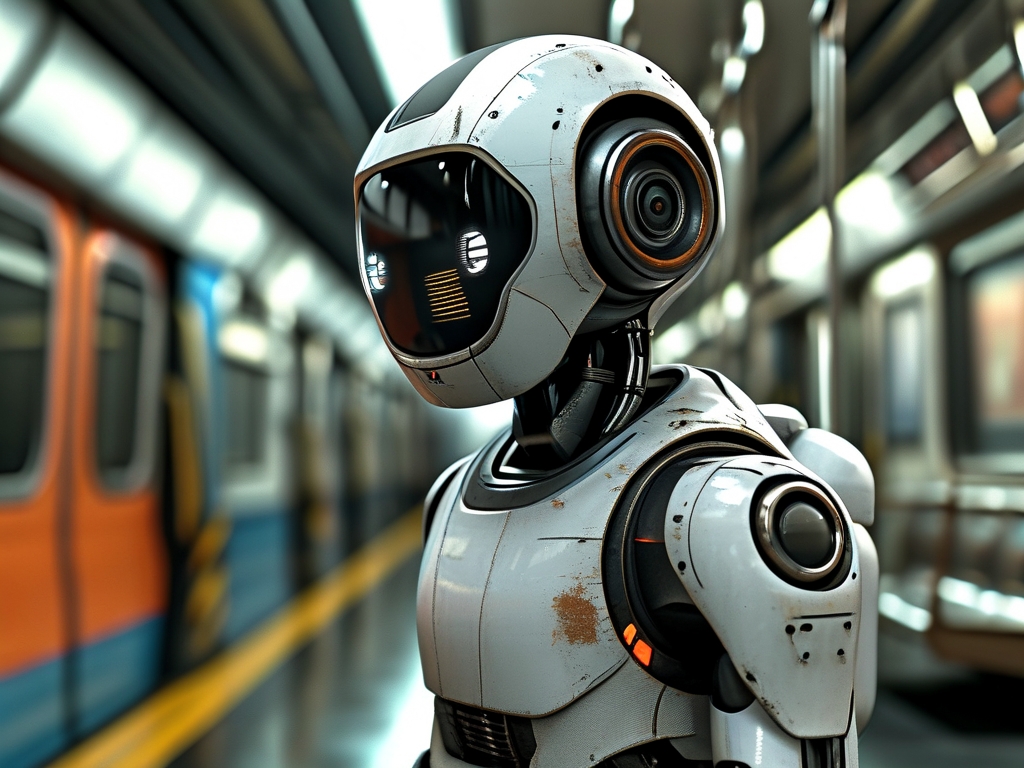The integration of robotics into metro systems is transforming urban transportation, offering unprecedented efficiency, safety, and sustainability. As cities grapple with growing populations and aging infrastructure, metro robotics technology emerges as a game-changer, redefining how millions commute daily. This article explores the innovations driving this revolution, their real-world applications, and the future of autonomous transit.
The Evolution of Metro Robotics
Metro systems, once reliant on human operators and manual processes, are increasingly adopting robotic solutions to address operational challenges. Modern metro robots fall into three categories:

- Maintenance Robots: Autonomous machines that inspect tracks, tunnels, and electrical systems. Equipped with LiDAR and thermal cameras, these robots detect cracks, leaks, or wear-and-tear faster than human crews. For example, Singapore’s Land Transport Authority deploys rail-grinding robots that work overnight to ensure smooth tracks, reducing service disruptions by 30%.
- Cleaning and Disinfection Robots: Post-pandemic, autonomous UV-C light robots sanitize trains and stations in cities like Seoul and Tokyo. These units operate during off-peak hours, minimizing health risks for passengers.
- Passenger-Assistance Robots: AI-powered kiosks and mobile robots in stations like Dubai Metro guide travelers, handle ticketing, and monitor crowd density using real-time analytics.
Core Technologies Powering Metro Robots
The success of metro robotics hinges on advancements in multiple fields:
- Autonomous Navigation: SLAM (Simultaneous Localization and Mapping) algorithms allow robots to navigate complex, dynamic environments without human intervention. For instance, Madrid’s Metro uses tunnel-inspection robots that create 3D maps while identifying structural issues.
- AI and Machine Learning: Predictive maintenance systems analyze data from sensors to forecast equipment failures. In London’s Underground, AI models reduced signal failures by 25% in 2023 by predicting track circuit malfunctions.
- Human-Robot Interaction (HRI): Natural language processing enables service robots to answer queries in multiple languages. Shanghai’s Metro features robotic attendants that assist tourists with route planning and cultural tips.
Case Studies: Global Implementation
- Tokyo, Japan: The world’s busiest metro system employs over 200 robots for tasks ranging from fare inspection to emergency response. A notable innovation is the “Safety Patrol Bot,” which uses thermal imaging to detect unattended bags or overheating machinery. Since its deployment, security incidents dropped by 18%.
- Paris, France: RATP Group’s autonomous shuttles connect last-mile routes to metro stations. These electric pods, equipped with obstacle-avoidance systems, have reduced carbon emissions by 40% in pilot zones.
- New York City, USA: The MTA’s “Track Geometry Car” robot conducts nightly rail inspections at speeds of 55 mph, identifying defects with 99.7% accuracy—a task previously requiring manual inspections and weeks of analysis.
Challenges and Ethical Considerations
Despite their potential, metro robots face hurdles:
- Technical Limitations: Underground environments disrupt GPS signals, necessitating alternative localization systems. Researchers are testing quantum inertial sensors for precise navigation.
- Public Acceptance: Surveys in Berlin revealed that 34% of passengers distrust fully autonomous trains. Transparent communication about safety protocols is critical.
- Job Displacement Concerns: Unions in cities like São Paulo oppose robotics, fearing job losses. However, experts argue that robots will create new roles in system supervision and tech maintenance.
The Future of Metro Robotics
Emerging trends promise even greater transformation:

- Swarm Robotics: Coordinated fleets of mini-robots could repair infrastructure collaboratively. MIT’s “Meshworm” prototype demonstrates how soft robots might seal tunnel cracks autonomously.
- Energy Harvesting: Robots powered by kinetic energy from moving trains are under development, aligning with net-zero transit goals.
- 5G Integration: Ultra-low latency networks will enable real-time robot coordination. Seoul’s Metro plans to deploy 5G-connected cleaning robots by 2025, capable of rerouting instantly during emergencies.
Metro robotics technology is not a distant fantasy but a present reality reshaping urban mobility. By enhancing safety, slashing operational costs, and reducing environmental footprints, these innovations pave the way for smarter, more resilient cities. As AI and engineering continue to evolve, the metro systems of tomorrow will likely be fully autonomous ecosystems—where robots and humans collaborate to keep cities moving forward.

